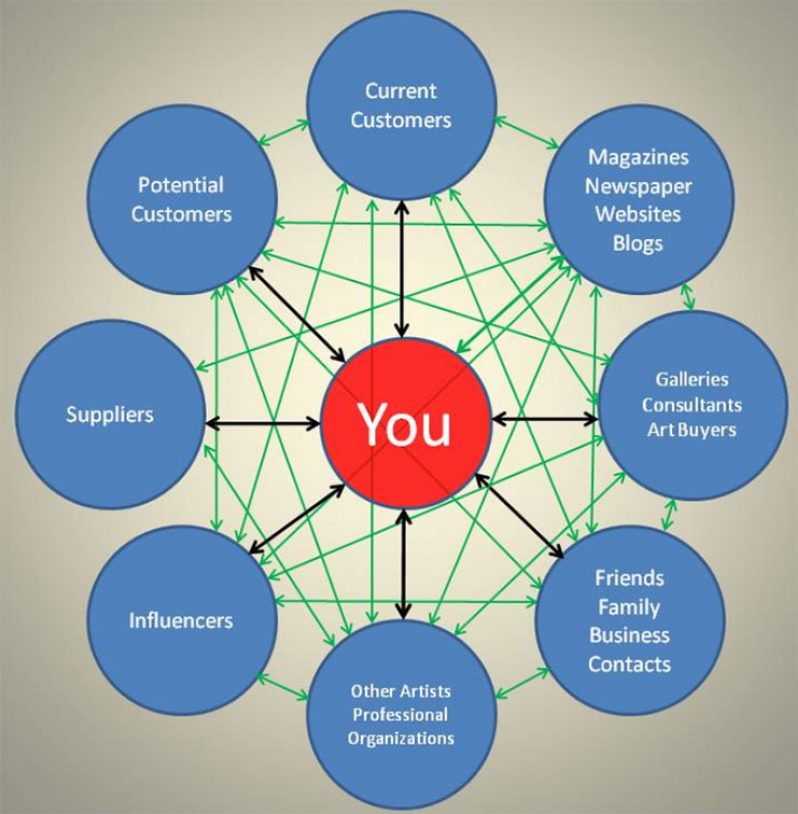THERE is a pervasive image of the starving/tortured/clinically insane artist working for hours on end in complete isolation that, to this day, remains tied in the perception of creative practitioners across the world. And while there is no definitive way of measuring the accuracy or inaccuracy of those ideas, there is also no denying that some amount of isolation is required in order to do the kind of work that artists do. Most times there is a vigorous process of self-interrogation involved that may seem strange to observers privy to their working methods. But now more than ever, artists are being forced out of isolation in order to keep up with the competitive world of contemporary art production. Yes, they can to a lesser degree continue to work in isolation but they often spend just as much time or even more trying to figure out how to take their work out of the studio and get it into the public domain (after all, the work is created so that it could be seen). This is where the art of networking comes into play.
If you’re an artist who has made it through art school or any type of informal art training and you’ve begun a serious practice, then by now you’ve probably realised that you pretty much have to do everything yourself. You’re not just an artist. You’re an “artist plus” meaning you’re an artist plus marketing manager plus agent and an endless list of other job titles. You don’t have the luxury of being just an artist unless you’re one of very few artists fortunate enough to get picked up by a gallery. Everyone else, on the other hand, is stuck in a vicious cycle of needing isolation but wanting exposure and struggling to find the perfect balance on his or her own. While some artists thrive on attention and make a career of being an eccentric “spectacle”, others have a crippling fear of public engagement. Regardless of where you fall on this spectrum, some amount of networking is necessary in order to advance your career. Recognising this and learning to embrace it is the first step towards increased opportunities and representation on various platforms.
No man is an island and this is especially true of artists. Trying to go at it alone will get you nowhere fast. It takes a collective effort to facilitate the success of any artist’s career. There is an intricate system of mutual dependence among artists, writers, curators, agents, gallery owners etc. that is necessary. Everyone has to show up for each other whether virtually and/or in real time. Whether you choose to argue the effectiveness of either presence doesn’t change the fact that both are important. In this day and age where social media reigns supreme not having an online presence is as good as donning a cloak of invisibility. In fact, I once heard someone say, “If you’re not on Facebook, do you even exist?” Now personally I have my own love/hate relationship with social media but it would be foolish of me to downplay its importance to furthering my own (or anyone else’s) career. But just as important as curating an online presence is to your career, so too is nurturing connections in the physical world. There is a different and unmatchable dynamic that unfolds when you’re in direct contact with someone. You can read their body language and they can read yours. It’s a much more organic way of communicating that has, in many cases, “sealed the deal” for connections that began online.
Having a strong community of other artists, writers, curators etc. to support your vision and the work that comes out of your studio is a crucial component of every creative practice. Why? It’s simple really. First and foremost (at least in my opinion), you need someone to listen to you. Whether it’s to listen to you, rattle on about the crazy ideas in your head or to talk you out of giving up, sometimes you need a sounding board that isn’t your own reflection in the mirror. Most persons are under the impression that as an artist you communicate visually so, therefore, you shouldn’t have anything to actually say; it should all be present in the artwork. But this couldn’t be further from the truth. There is often a lot of thinking out loud that happens before, during and after the artwork is produced. Being surrounded by persons who are willing to listen and understand the highs and lows that accompany your creative practice, makes shouldering the burden so much easier. Ideally, this is one of the many ways having a strong network is supposed to work in your favour. And in the same way, those persons show up to offer you support, you too should, in good faith, reciprocate that and be present whenever your peers need encouragement.
Building a strong network also provides you with access that might have been previously limited or denied altogether. Now, while you are indeed looking for access (which also translates to opportunities, sales, etc.), this shouldn’t be how you make your introduction. You don’t want to come across as desperate and needy, nor do you want to seem arrogant since both are incredibly off-putting. The key is finding the right amount of confidence and curiosity to sustain interesting conversations. So ideally, the time you spend socialising should be about the person you’re engaging with. Your objective should be learning more about that person and creating the kind of genuine conversation that will pique their interest in you and, by extension, your work. Obviously, this kind of networking comes more naturally to some than it does others. For the more reclusive personalities, this may be a challenge whereas the more outgoing personalities would have no trouble charming an audience. Regardless of where you fall on this personality spectrum, with enough practice, you would be able to find your own creative ways to network like a pro.
Tip: For those struggling with direct engagement, a good idea would be to start with online forums where the pressure to have the perfect, witty and immediate response is removed. You can take your time to craft the perfect email, social media comment or whatever it happens to be. There are also options to undo and delete what you’ve written should there be any mistakes (granted they’re recognised before sending). Once you feel confident enough to take it a step further then you can challenge yourself by engaging with audience members at exhibition openings, readings etc.



.jpg)











